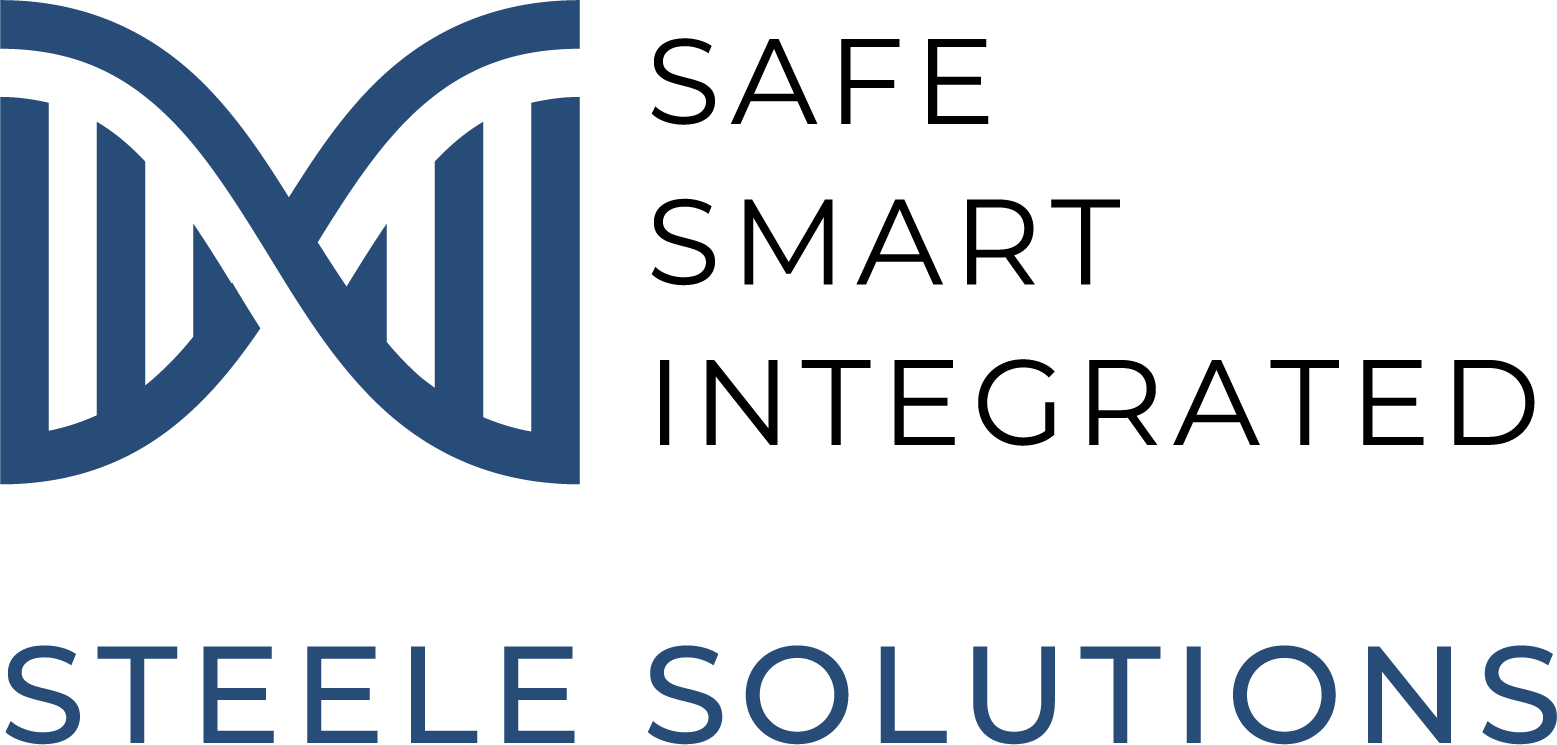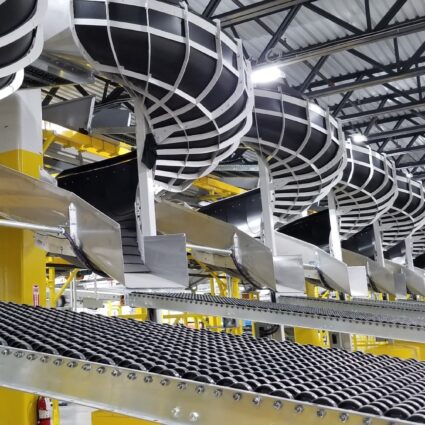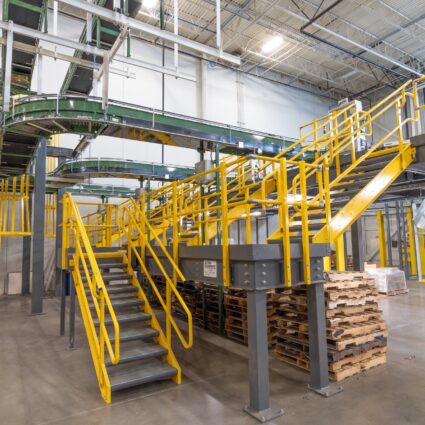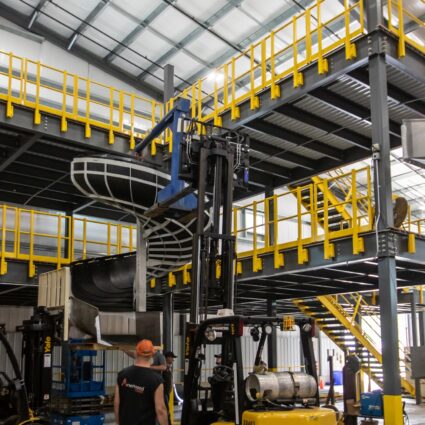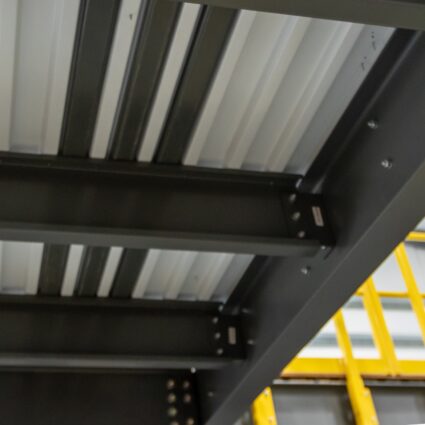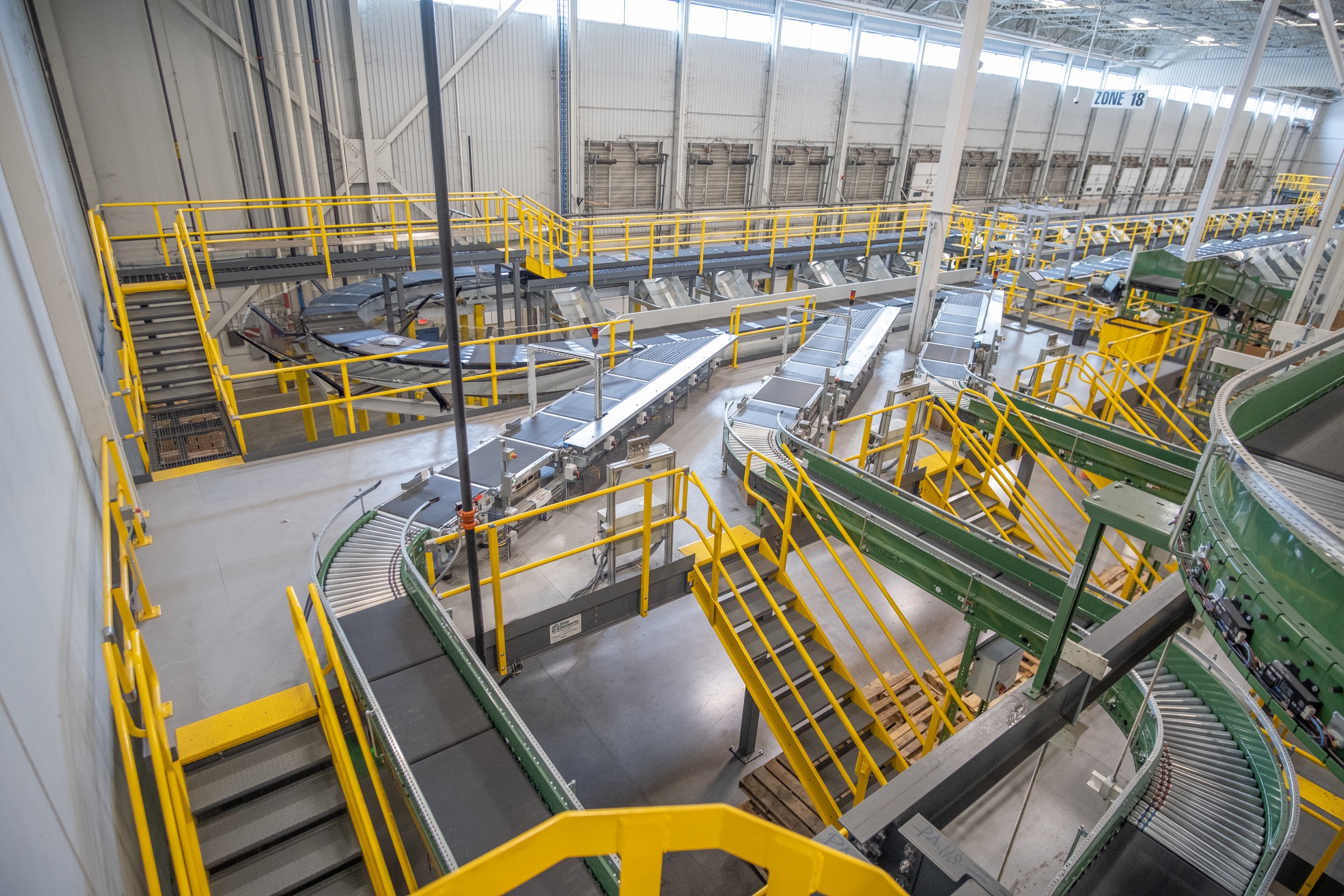
Industrial Mezzanine Applications
by Kevin O’Neill
Steele Solutions has the production and design capabilities to provide solutions for equipment platforms outside the material handling industry. SSI excels in small to medium size structures. These platforms vary from a small one-level access platform for equipment operation or maintenance to 4-level tower structures that can be up to 60 feet above ground level. The design of these structures may require a bit more coordination and design time to provide fully engineered solutions, but this does not limit SSI’s ability to provide a solution for equipment access and support.
Industrial equipment comes in many different sizes and shapes, and SSI has provided structural solutions for recyclers, shredders, cyclones, mixers, extruders, and blown film systems, to name a few. No matter what system needs to be supported, there are three main concerns when designing these more significant equipment pieces.
The first is larger equipment and product loads. The support points where the equipment is attached to the structure are critical to ensure that proper detailing is provided for quick and easy installation and adequate members are sized to resist the high loads.
In addition to the larger static loads are dynamic loads that are generated from large drives or rotating components. Typically, the equipment designer will provide a frequency and corresponding load for the frequency provided. This information is crucial for ensuring the structure can be designed for dynamic loads. All structures have a natural frequency. It is essential to check the machinery’s frequency with the structure’s frequency to ensure resonance or deflection amplification will not occur and avoid potential fatigue problems in the design or equipment.
For specific industrial systems, maintenance and equipment access may need to be provided at multiple levels. There are many challenges to multi-level structures. Specific height structures may require more complicated analysis by code. Stair towers need to be considered for access to the structure, or space needs to be provided throughout the structure for access at each level. Lastly, the preferred method of resisting lateral loads and providing multi-level structural stability is through bracing systems. However, bracing systems may limit access to machines’ specific points if the structure and access platform’s footprint is limited. Also, working access routes and stairs around bracing can present its challenges.
All industrial equipment presents a different set of challenges and layout problems. Be sure to consider the structural depth and member locations when planning the specific system. Coordination and pre-engineering during the quoting stages will help provide the most cost-effective solution for your industrial design.
